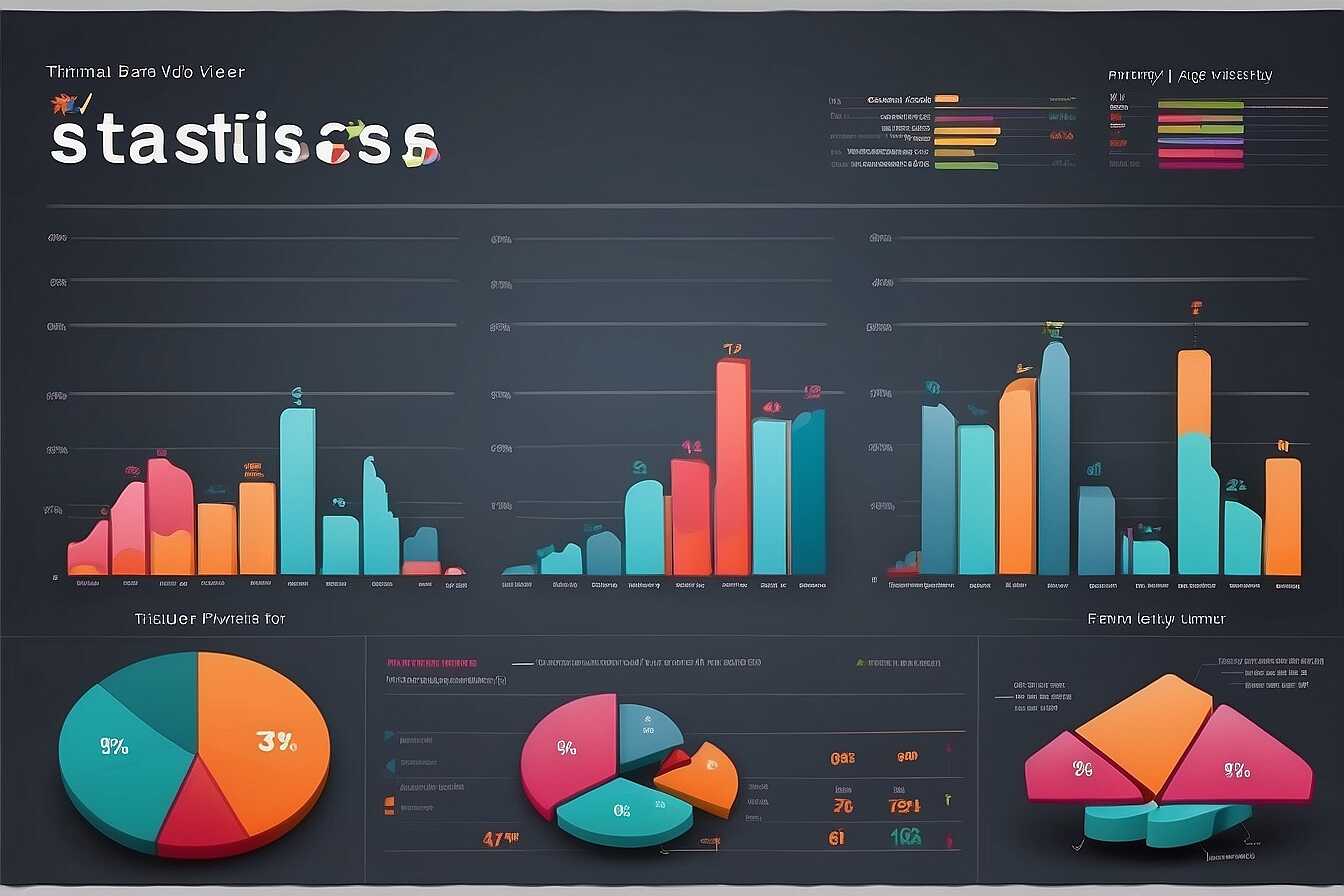Analyzing Google Search Console queries is essential for generating strategic content ideas that resonate with users. By understanding the data behind search queries, you can uncover valuable insights into your audience’s interests and behaviors. At Metrics Rule, we believe that leveraging this information can lead to effective content creation and improved SEO strategies. By focusing on data-driven tactics, you can enhance your website’s performance and ultimately meet the needs of your target audience.
Exploring Google Search Console Tools for Query Analysis
Google Search Console offers several essential tools for analyzing search queries, including the Performance Report, Coverage Report, and URL Inspection tool. The Performance Report shows you how users are finding your website, detailing metrics such as impressions, clicks, and average position for specific search queries. You can leverage this data to understand which keywords are driving traffic and adjust your content strategy accordingly. The Coverage Report highlights indexing issues, helping you ensure that all relevant pages are indexed. The URL Inspection tool allows you to test how Google interprets specific URLs, providing insights into potential improvements. By utilizing these Google Search Console features, you can enhance your content creation process and ensure that it aligns with your audience’s search behaviors.
Maximizing Keyword Research with Google Search Console
To maximize keyword research, utilize the Performance Report effectively by filtering results based on various dimensions such as queries, pages, and countries. This tool helps in identifying high-performing keywords and discovering new content opportunities. For example, by analyzing queries with high impressions and low clicks, you can pinpoint topics that require optimization. Focusing on these insights can greatly enhance your SEO strategy. Remember, understanding search queries allows you to create content that resonates with your target audience, ensuring it aligns with their needs and promotes engagement. Additionally, make use of performance metrics over time to track results, which can inform further adjustments to your SEO approach.
Methods for Collecting Valuable Search Query Data
There are several effective methods to extract valuable search query data from Google Search Console. Start by navigating to the Performance report, where you can filter your data by date range, search type (Web, Image, or Video), and specific queries. This information provides insight into user search interests. Consider exporting the data as a CSV file for more detailed analysis. You can also use filters to isolate queries that resulted in clicks and impressions, allowing you to identify high-performing keywords. Leveraging the data for content idea generation can significantly enhance your content strategy, providing targeted topics that resonate with users.
Understanding Industry-Specific User Search Behavior
By analyzing Google Search Console queries, businesses can uncover industry-specific user search behavior. This analysis includes exploring variations of keywords that consumers regularly use. For example, e-commerce businesses can identify queries that lead to purchases. This targeted approach ensures that content creation aligns with user search patterns, enhancing relevance and visibility. Implementing a content calendar based on these insights will streamline your SEO efforts, improving engagement and improving conversion rates. Regularly reviewing and updating this data, especially in dynamic industries, will help maintain a competitive edge.
Spotting Content Gaps to Enhance Audience Engagement
Identifying content gaps is crucial for optimizing your website’s SEO performance and enhancing audience engagement. Use Google Search Console queries to discover what users are actually searching for. Pay attention to search terms that generate impressions but few clicks. This indicates that users are interested in those topics but not finding adequate information on your site. Additionally, check for high bounce rates where users leave quickly after viewing your content. This often signals that your content doesn’t align with user expectations. By diagnosing these issues, you can create targeted articles that truly meet user needs, improving engagement and overall site quality.
Strategies for Analyzing Gaps in Content Based on Queries
To effectively analyze gaps in your content, begin by exporting queries from Google Search Console. Sort these queries by impressions and click-through rates (CTR). Focus on high-impression but low-CTR queries, indicating missed opportunities. Identify central themes and questions users are asking. Use this data to brainstorm new content ideas tailored to these specific inquiries. This strategy ensures your content remains relevant and enhances user satisfaction, effectively addressing their search intent while leveraging SEO best practices that Metrics Rule advocates for in Vancouver.
Numerical Insights About Search Query Analysis
- Search Console can track up to 1,000,000 queries for each property annually.
- Users can filter queries by date range, optimizing their analysis over defined periods.
- There are more than 800 million unique search terms entered on Google every day.
- Google Search Console provides data for the top 1,000 queries across your site.
- Nearly 90% of online experiences begin with a search engine.
- The average click-through rate for the top position on Google is around 31.7%.
- High-ranking pages often enjoy a 10x boost in organic traffic compared to lower positions.

Understanding Search Intent and Its Impact on Content
Understanding search intent involves recognizing various types such as informational, navigational, transactional, and commercial. Informational intent could mean users seek answers to questions, while transactional intent often indicates a desire to make a purchase. Entities involved in analyzing search intent may include keywords, user behavior data, search engine results, and competitors. Grasping these nuances helps to tailor content effectively to meet user needs. Studies show that optimizing for user intent can enhance content engagement rates by up to 50%.
Types of Search Intent and Their Applications
Types of search intent can be broadly categorized into four groups: informational, navigational, transactional, and commercial investigation. Informational search intent is designed to provide users with answers to specific questions, while navigational searches aim to lead users to specific websites or pages, such as a brand’s home page. Transactional intent signifies a readiness to purchase, indicating users who are ready to convert. Commercial investigation involves users looking for products or services to compare before making a purchase. By focusing on these search intent types, Metrics Rule can enhance content targeting techniques, effectively increasing the quality and relevance of the SEO strategies implemented for clients in Vancouver.

Effective Keyword Prioritization Utilizing Search Metrics
To identify high-priority keywords in Google Search Console, start by examining key performance metrics like impressions, clicks, and average position. Impressions indicate how often your content appears for a keyword, while clicks show actual traffic generated. Prioritize keywords with a high impression count but low click-through rates to identify potential content gaps. Additionally, consider user experience metrics, such as bounce rates and average session duration, for better understanding of audience engagement. Evaluating those metrics ensures that your content can capture your target audience’s interests.
Essential Metrics for Keyword Evaluation
When assessing keywords for prioritization, focus on a range of essential metrics to create an effective strategy. Besides impressions and clicks, analyze the average ranking position for each keyword. A keyword with a position between 4 and 10 is typically on the first page, providing an excellent opportunity for optimization. Also, assess the click-through rate (CTR) to understand how well your pages are performing at different rankings. Aim for a balanced mix of high-impression keywords and long-tail keywords with less competition for best results. This approach improves both content relevance and user engagement, enhancing your overall SEO strategy.
Key Advantages of Analyzing Search Queries
- Users can identify trending topics that resonate with their audience immediately.
- Insights help optimize content strategies and improve search engine visibility.
- Search data uncovers potential gaps in existing content, guiding creation efforts.
- Engaging with high-performing queries leads to better user satisfaction and retention.
- Data analyzed can refine keyword targeting, enhancing ranking opportunities.
- Understanding query types allows for tailored content that meets specific needs.
- The analysis makes it easier to track content effectiveness and adapt strategies.

Transforming Search Behavior Data into Content Strategies
Transforming search query data into actionable content strategies begins with a thorough analysis of Google Search Console. Start by identifying common keywords that drive traffic to your site. By analyzing user intent behind these keywords, you can create content that meets their needs effectively. Look for user behaviors such as high click-through rates (CTR), which indicate successful matches to user queries, and low bounce rates, suggesting users find your content valuable. This data helps ensure your content is more targeted, enhancing the likelihood of conversion. Remember, focusing on user behavior increases the reliability of your content strategy, aligning it with what your audience is actively searching for.
Key User Behaviors to Enhance Content Relevance
Understanding key user behaviors can greatly enhance content relevance. Google Search Console provides insights into how users interact with your content. For example, monitoring search queries reveals which topics resonate most with your audience. Look for metrics like impressions, clicks, and average position to gauge performance. By focusing on these metrics, you can adapt your content strategy to include more high-performing keywords. This proactive approach enables you to develop content that satisfies user expectations and navigates SEM effectively. Overall, leveraging these insights can improve user engagement and drive more traffic to your site.
Evaluating the Performance of Your Content Over Time
To consistently evaluate the performance metrics of your content, you should regularly track key indicators. These indicators include traffic, engagement, and rankings. Focus on performance metrics analysis like bounce rates, time on page, and click-through rates (CTR). These metrics provide invaluable insights into reader behavior and content effectiveness. Aim for a significant organic traffic improvement after integrating SEO strategies tailored to audience interests.
Optimizing Your Content Based on Performance Data
To enhance your content based on performance data, consider utilizing tools like Google Analytics or Google Search Console. These platforms provide detailed insights into user behavior, helping you pinpoint which content resonates most with your audience. By analyzing user engagement metrics, you can identify successful content strategies that drive traffic and boost user retention. Regularly testing and optimizing your content ensures that it remains relevant and appealing, improving its performance over time and ultimately enhancing your SEO initiatives.
Popular Tools and Their Target Users
- Google Search Console is ideal for SEO experts and webmasters focusing on website performance.
- SEMrush is beneficial for competitive analysis, helping marketers benchmark against competitors.
- Ahrefs serves content marketers aimed at keyword research and backlink strategies.
- Keyword Planner is great for small businesses looking to discover new keywords.
- Moz Pro is suitable for experienced SEO users focusing on site audits and ranking tracking.
- AnswerThePublic engages content creators searching for relatable topics to cover.
- Tableau provides data visualization for teams and businesses analyzing complex datasets.
Adapting Your Content Strategy through Continuous Learning
Analyzing search queries helps improve content relevance and audience targeting by providing insights into what users are actively seeking. This data-driven approach ensures that your content aligns with user interests, enhancing engagement and driving more qualified traffic. Tools like Google Search Console offer the ability to monitor performance, identify gaps, and adjust your strategy accordingly. By continuously testing and refining your keywords and content focus, you can significantly improve your search rankings and maintain market relevance. Reports show that businesses optimizing their content based on Google Search Console data can experience up to a 30% increase in organic traffic.
Essential Tools and Methods for Continuous Content Strategy Improvement
Utilizing tools like Google Analytics and keyword research platforms can greatly aid in ongoing content strategy improvement. Google Search Console provides reliable data about search queries, click-through rates, and user behavior. By regularly reviewing this information, you can identify trends and adapt your content accordingly. Additionally, methods such as A/B testing can help determine the most effective content formats and topics. Employing these strategies can enhance your content’s performance, ensuring it stays relevant in an evolving digital landscape. Regularly updating your content based on analytics will provide ongoing value to your audience and secure your competitive edge in Vancouver’s market.
